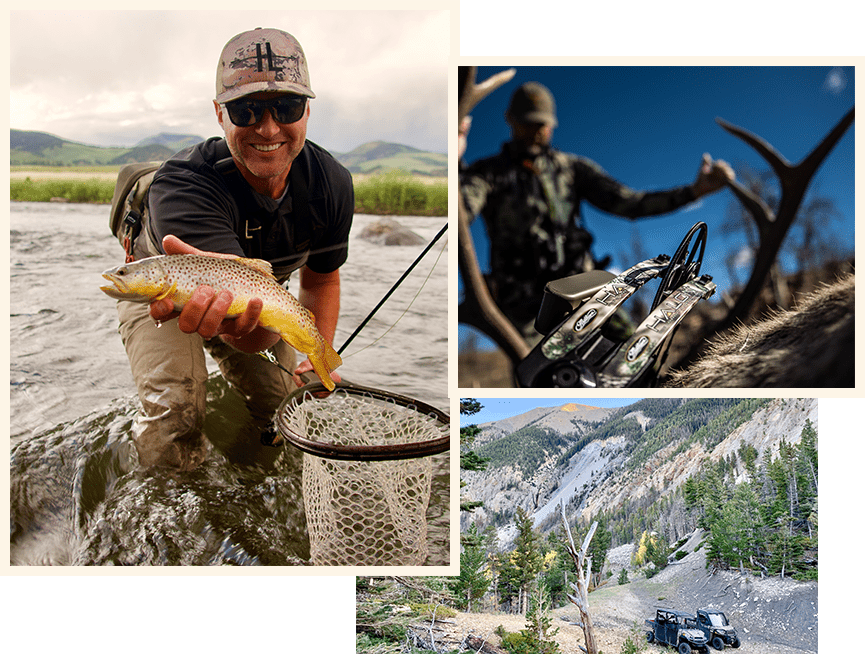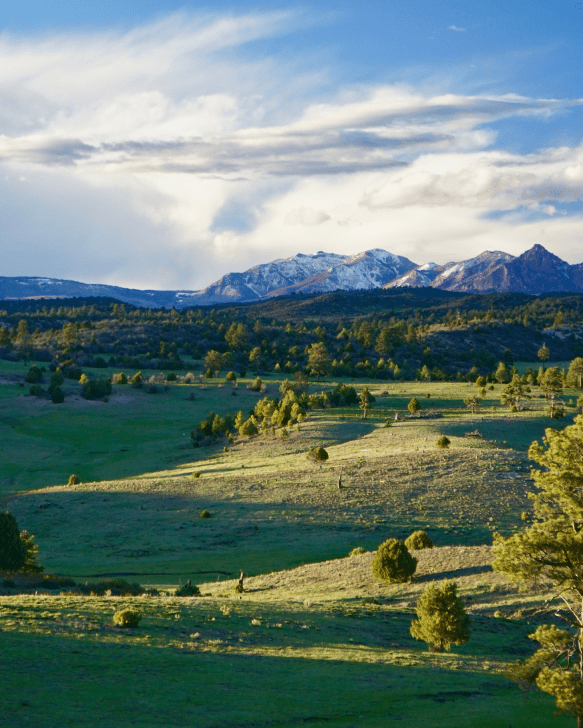Snowpack helps farmers, ranchers, rivers, and forests in Colorado. After peaking in February, however, the 2022 Colorado snowpack levels took an early turn. Snowpack diminished quickly, thanks to solar flares and changing weather patterns. Climate can seriously affect larger properties.
The Colorado snowpack map expects big swaths of Colorado ranchlands and agricultural properties to experience drought this year. In 2022, only the midwestern and north-central parts of Colorado received average snowpack. Other areas have seen hastening the runoff.
Ranchers Depend on Snowpack
Ranchers depend on snowpack for watering, grazing, and improved wildlife habitat. As winter ends, higher temperatures often melt snowfall before it hits the ground or shortly thereafter. This precipitation soaks in, activating growth. Fast forward to July and August when hot weather adds to existing drought conditions that may induce lightning-initiated forest fires.
Ranchers would rather deal with deep Colorado snowpack that melts slowly. This keeps our rivers, creeks, and irrigation ditches flowing longer into the summer. This protects rivers. If there’s sufficient snowpack Colorado, it fills waterways and irrigation ditches, ranchers and farmers can distribute the water onto the land, preventing the grazing pastures from becoming too dry. Of course, this is especially important for all farms in Colorado.
Alternative Water Sources
Note to real estate investors and would-be ranchers: When searching for Colorado ranches and farms for sale, be sure to investigate the amounts of snowpack over recorded history. You can see why farmers consider snowpack Colorado invaluable for irrigation. Be certain of existing water rights and improvements for alternate water sources.
One thing we know: Mountains make forecasting more difficult. We can never exactly foretell snowpack or precipitation. For example, when two fronts meet, winds may blow snow clouds over to a different mountain valley than forecasted. It’s always smart for ranchers to prepare for the worse case. Find secondary water sources. A neglected ranch is hard to revive.
Well-managed farms in Colorado have secondary watering practices. A good harvest is a farmer’s joy, especially in the high desert and high plains of Colorado. Smart farmers anticipate low snowpack by developing wells, rain barrels, and other systems into operation. Irrigation systems can save hay fields on ranches and other croplands in Colorado.
Colorado Snowpack Map
During the middle of winter, Colorado snowpack 2022 levels were average to above average. Spring warming changed it a bit, especially in the northwest and southwest corners of the state. Colorado snowpack levels sits at approximately 91 percent of the average.
Snowpack includes air plus wet and drier snow. SNOTEL measures the water equivalent. Let’s take a second to look at the Colorado snowpack map published by the Westwide SNOTEL Current Snow Water Equivalent (SWE) % of Normal on May 1, 2022. A couple of sections of our Colorado farms will be facing extreme drought. This chart puts areas of the Four Corners and mid-Colorado southeast to the eastern corner in the categories of 50-69 percent of average snowpack. Unfortunately, snowpack lies under 50 percent in south-central Colorado.
There’s better news though. The north-central area registers 99 percent of average snowpack and other swathes of the state fall in the 70 to 99 range. So, it is a year to be creative. The map changes daily, see west_swepctnormal_update.pdf
Land Management Options
In Colorado, farmers and ranchers are keenly aware of the effect of low snowpack on their properties. However, investors also need to consider the effect of low snowpack on their farms and ranches.
Snowpack levels predetermine what other water sources will be necessary for farming and improving wildlife habitat. Without planning, Colorado ranches, meadows, and fields suffer, as do forests. Ski resorts have been cranking out manmade snow. But what to our Colorado ranchers do? They will need plans in place to replace any low snowmelt.
Cattle, sheep, goats require grazing fields. If ponds and seasonal creeks go dry, ranchers may need to truck water to the outlying areas where the ranch herds graze. When properly watered, these rich pastures also draw abundant wildlife and better hunting and recreation. These are just a sampling of the exciting challenges ranchers face.
Western Drought Relief
The western drought can go on for years. Nonetheless, investors who are in the game for the long term will find out the weather/climate changes follow a sine wave that repeats itself about every 70 years. Hotter dryer weather gives way to those record cold winters with unbelievable snowfall.
Second guessing weather changes happens to be an alluring part of the lifestyle on Colorado farms and ranches. They partner with Mother Nature every day. It brings out their ingenuity and demand fortitude. The music keeps playing, into the night and early the next day.
How Drought Can Affect Recreational Ranches
Anyone searching for Colorado ranches for sale should partner with a reputable broker specializing in ranch land. These ranch real estate agents become familiar with the challenges ranchers face. Besides pushing wildlife towards other water sources, drought can limit the water levels in fishing holes. Mountain lakes and those in the lower elevations will both notice it, especially later in the summers. So, we are rooting for the moderate Colorado snowpack 2022 to take its good old time to melt.
Colorado Ranches and Farms for Sale
Call Harrigan Land Company at 303-908-1101 to talk about Rocky Mountain ranches and farms.


